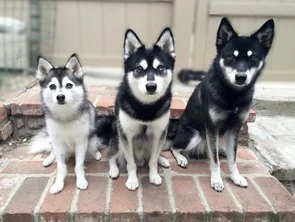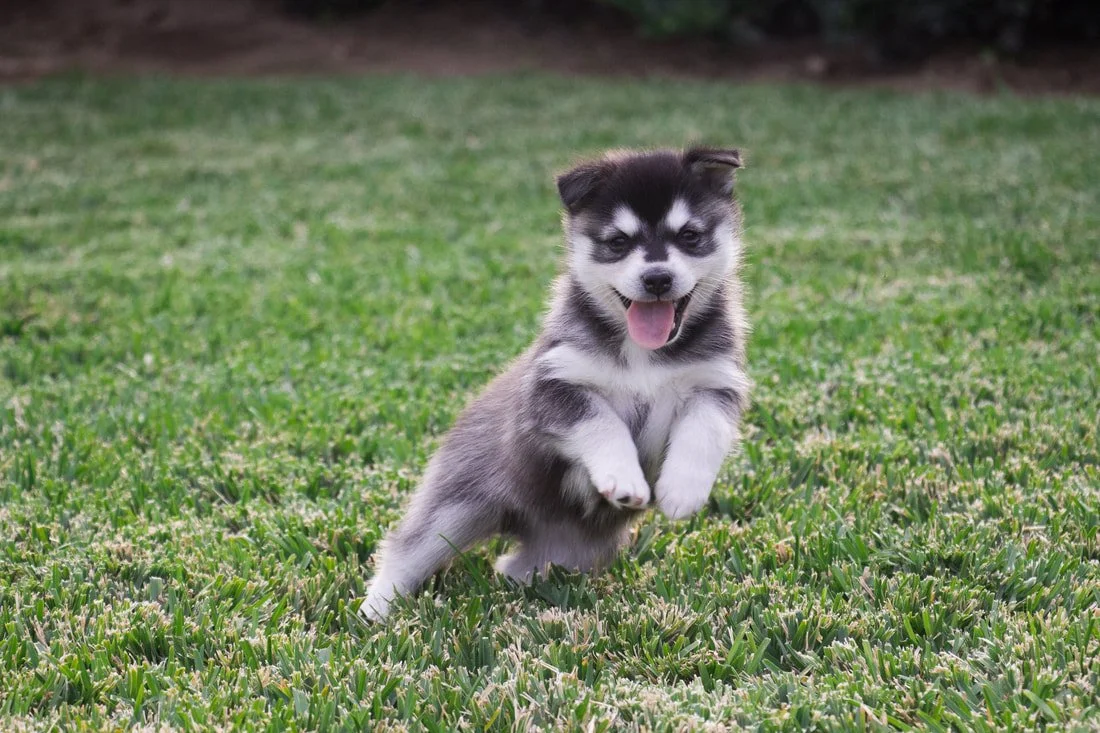ABOUT THE BREED
The Alaskan Klee Kai was developed in Alaska by Linda Spurlin and her family, to be a companion-sized version of a type of dog referred to as the Alaskan Husky. From the early ’70s through 1988, the Spurlins carefully selected dogs who met their high standards for appearance and soundness. In 1988, they made the Alaskan Klee Kai available to others. Mrs. Spurlin originally called her new breed the “Klee Kai”, but in 1995 it was changed to “Alaskan Klee Kai”.
The Alaskan Klee Kai was recognized by the American Rare Breed Association (ARBA) in 1995, by the United Kennel Club (UKC) in 1997, and accepted into the Foundation Stock Service (FSS) by the American Kennel Club (AKC) in 2020.
The Alaskan Klee Kai comes in three different sizes (in ARBA and UKC) as measured at the withers as follows:
Toy: Up to and including 13 inches
Miniature: Over 13 inches and up to and including 15 inches
Standard: Over 15 inches and up to and including 17 inches
The Alaskan Klee Kai comes in four colors, black and white, gray and white, red and white, as well as white (although this is not a preferred color and cannot be shown in conformation). They also have a wide array of eye colors, including: brown, blue, hazel, and any combination of these (bi-eyed and parti-eyed).
The breed is a double coated breed, which means they have a top coat and a fluffy undercoat. They typically blow their undercoat twice a year, however they still shed fur regularly. They typically don't require a large amount of grooming. Weekly brushing sessions and a bath a couple of times a year is usually sufficient.
TEMPERAMENT
The Alaskan Klee Kai is known to not always be the most social of dog breeds. They tend to choose a couple of people to be "theirs" and simply tolerate everyone else. It is common to hear that a Klee Kai is very social and outgoing as a puppy and then starts to become more reserved as they get older. As such, new owners need to ensure that they safely and correctly expose their Klee Kai puppy to new environments, sounds, textures, and people of all sizes and ages to maintain a positive temperament. In addition, it is important for new owners to discuss how puppies are raised with their breeder, as the 0-12 week period is incredibly important. Here at Thurisia we use the Puppy Culture methodology to raise our litters. We are the first, and currently only, Alaskan Klee Kai breeder to be recognized by the Puppy Culture program. We pride ourselves on raising outgoing and social Klee Kai. However, although they are given the best start that we can possibly give them, socialization should never stop. We recommend that new owners research canine fear periods to ensure that they properly socialize their new puppy.
The Klee Kai is highly intelligent. As such, we recommend that you start training your puppy shortly after they become a part of your household. There are a variety of different training methods, and it is important to note that every dog learns differently. Here at Thurisia, we start our puppies off with clicker training and positive reinforcement. We highly recommend that new owners look into Karen Pryor's 101 Things to do With a Box for more information on this methodology.
This breed likes to talk. While they don't typically bark a lot (there are definitely exceptions), they enjoy telling you about their day when you get home and they let their displeasure be known when left alone. We start crate training our puppies from an early age. Even though you may not feel that your puppy needs to be crated, it is a useful tool to have in his or her repertoire should the need arise (vet stays, emergencies, pet boarding, etc.). In addition, the Alaskan Klee Kai is known for experiencing separation anxiety. This can be anywhere from mild to severe, ranging from whining when left alone to being incredibly destructive. To ensure their safety, as well as to keep your home intact, we recommend that you crate train your puppy for when you need to leave or, at the very least, have a safe area of your home while unattended. Although they will get their start here, we recommend using Susan Garret's Crate Games (found here) to make the crate training experience more fun for you and your puppy.
Like their Alaskan and Siberian Husky ancestors, the Klee Kai is not a breed to be trusted off leash in an unenclosed area. As mentioned above, the breed is highly intelligent and very independent, making them great escape artists. A miniature Klee Kai can easily make his or her way out of a hole the size of a brick if desired. In addition, the Klee Kai can have a strong prey drive. As such, careful consideration should be taken prior to introducing your Klee Kai to small dogs, cats, birds etc. or when in an area with squirrels or other small animals.



